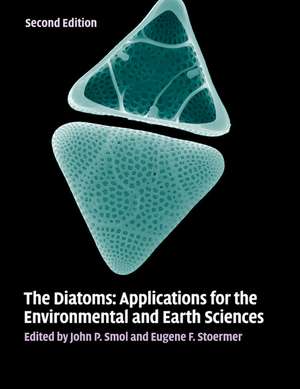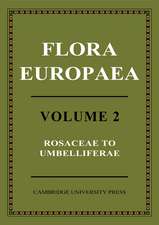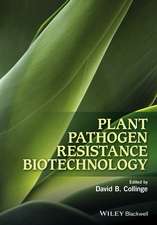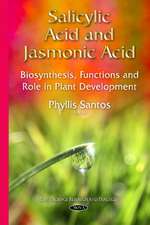The Diatoms: Applications for the Environmental and Earth Sciences
Editat de John P. Smol, Eugene F. Stoermeren Limba Engleză Paperback – 16 dec 2015
| Toate formatele și edițiile | Preț | Express |
|---|---|---|
| Paperback (1) | 449.03 lei 6-8 săpt. | |
| Cambridge University Press – 16 dec 2015 | 449.03 lei 6-8 săpt. | |
| Hardback (1) | 1527.91 lei 6-8 săpt. | |
| Cambridge University Press – 29 sep 2010 | 1527.91 lei 6-8 săpt. |
Preț: 449.03 lei
Preț vechi: 554.36 lei
-19% Nou
Puncte Express: 674
Preț estimativ în valută:
85.93€ • 90.78$ • 71.84£
85.93€ • 90.78$ • 71.84£
Carte tipărită la comandă
Livrare economică 01-15 ianuarie 25
Preluare comenzi: 021 569.72.76
Specificații
ISBN-13: 9781107564961
ISBN-10: 1107564964
Pagini: 686
Ilustrații: 175 b/w illus. 16 tables
Dimensiuni: 216 x 280 x 40 mm
Greutate: 1.56 kg
Ediția:Revizuită
Editura: Cambridge University Press
Colecția Cambridge University Press
Locul publicării:New York, United States
ISBN-10: 1107564964
Pagini: 686
Ilustrații: 175 b/w illus. 16 tables
Dimensiuni: 216 x 280 x 40 mm
Greutate: 1.56 kg
Ediția:Revizuită
Editura: Cambridge University Press
Colecția Cambridge University Press
Locul publicării:New York, United States
Cuprins
Preface; Part I. Introduction: 1. Applications and uses of diatoms: prologue; 2. The diatoms: a primer; 3. Numerical methods for the analysis of diatom assemblage data; Part II. Diatoms as Indicators of Environmental Change in Flowing Waters and Lakes: 4. Assessing environmental conditions in rivers and streams with diatoms; 5. Diatoms as indicators of long-term environmental change in rivers, fluvial lakes and impoundments; 6. Diatoms as indicators of surface-water acidity; 7. Diatoms as indicators of lake eutrophication; 8. Diatoms as indicators of environmental change in shallow lakes; 9. Diatoms as indicators of water-level change in freshwater lakes; 10. Diatoms as indicators of hydrologic and climatic change in saline lakes; 11. Diatoms in ancient lakes; Part III. Diatoms as Indicators in Arctic, Antarctic and Alpine Lacustrine Environments: 12. Diatoms as indicators of environmental change in subarctic and alpine regions; 13. Freshwater diatoms as indicators of environmental change in the High Arctic; 14. Diatoms as indicators of environmental change in Antarctic and subantarctic freshwaters; Part IV. Diatoms as Indicators in Marine and Estuarine Environments: 15. Diatoms and environmental change in large brackish-water ecosystems; 16. Applied diatom studies in estuaries and shallow coastal environments; 17. Estuarine paleoenvironmental reconstructions using diatoms; 18. Diatoms on coral reefs and in tropical marine lakes; 19. Diatoms as indicators of former sea levels, earthquakes, tsunamis and hurricanes; 20. Marine diatoms as indicators of modern changes in oceanographic conditions; 21. Holocene marine diatom records of environmental change; 22. Diatoms as indicators of paleoceanographic events; 23. Reconsidering the meaning of biogenic silica accumulation rates in the glacial Southern Ocean; Part V. Other Applications: 24. Diatoms of aerial habitats; 25. Diatoms as indicators of environmental change in wetlands and peatlands; 26. Tracking fish, seabirds, and wildlife population dynamics with diatoms and other limnological indicators; 27. Diatoms and archaeology; 28. Diatoms in oil and gas exploration; 29. Forensic science and diatoms; 30. Toxic marine diatoms; 31. Diatoms as markers of atmospheric transport; 32. Diatoms as nonnative species; 33. Diatomite; 34. Stable isotopes from diatom silica; 35. Diatoms and nanotechnology: early history and imagined future as seen through patents; Part VI. Conclusions: 36. Epilogue: a view to the future; Glossary, acronyms, and abbreviations; Index.
Recenzii
'I'd recommend this book to all students doing diatom research. It is an excellent source for basic information … The bibliography at the end of each chapter is excellent … [The book] could also be used as a textbook for a course on diatoms.' Diatom Research
'… this is an excellent work and I commend the editors and authors for developing and now expanding on a comprehensive and coherent book that makes clear that diatom science will continue to grow for the next generation of scientists.' The Holocene
'… this is an excellent work and I commend the editors and authors for developing and now expanding on a comprehensive and coherent book that makes clear that diatom science will continue to grow for the next generation of scientists.' The Holocene
Descriere
A much revised and greatly extended compilation of the expanding uses of diatoms in the environmental and earth sciences.












